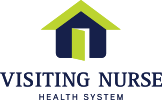Jan
03
2017
What to Expect in 2017
Uncertainty and opportunity. No one has a crystal ball on what changes will come to health care in 2017. (If someone does have a crystal ball, please send me the winning lottery ticket numbers for next Saturday. I prefer the Powerball.)
If you have been on planet Earth for the past few months, you know that beginning January 21, 2017 we will have a new President with a new agenda. In addition to having a Republican in the White House, both houses of Congress have a Republican majority. We do not need a crystal ball to know that there will be changes to the Affordable Care Act (ACA) often referred to as ObamaCare. We can assume that some changes will be good and some will be not-so-good. That is how policy works.
A Look at the Affordable Care Act
Americans like much of the ACA, such as providing insurance for dependents up to 26 years of age and that no one can be denied insurance for pre-existing conditions, and that all insurance coverage must completely cover preventative health care. I do not expect these will change.
But problems exist in the law. For example, for the past 40 years real, per capita healthcare spending has been growing at twice the rate of growth of real, per capita income. You do not need to be an economist to understand that if the cost of something you need is growing faster than your income, you have to cut back on something else. To try to combat the growth, after 2018 the ACA limits the growth of Medicare spending, Medicaid Hospital payments and government subsidies to the exchanges to basically the cost of real GDP growth plus ½ of 1 percent. This means that as health care costs rise, the government will be providing less and less help to those in need. This is but one example of why we need to fix the ACA—and the issues in health care. It is incredibly complex. The costs are growing too fast and we need to be sure that Americans have access to health care. Stating the problem is simple but the solution is not easy.
About half of the ACA was paid for by cuts to healthcare providers. The results of these cuts across the country is reduced access to care for the most vulnerable among us. Providers are being asked to do more and get less reimbursement. I hope that we see an increase in reimbursement and a decrease in the regulatory burden—especially the burdens that do nothing to improve care.
And the list goes on—but I only have 500 words for this blog.
Challenges Produce Opportunities
Here are a few opportunities that come from some of the problems we face: first, to get healthcare costs under control, we must fix the healthcare system by reducing waste, fraud and abuse; a drive to tie payment to quality; price transparency for patients; and, greater patient engagement. The providers with the highest quality should get the highest reimbursement. When we buy just about anything other than healthcare, we tie quality to price. Would it not make sense for healthcare payers to pay providers based on if they keep people healthy or heal them rather than just because they perform a particular procedure?
As consumers of health care, we need to know which questions to ask, we need education on how to be a partner with our physician in our healthcare decisions. I believe that one of our biggest opportunities is for personal responsibility in our health and our health care. We need information and full transparency with an understanding of the cost, the risks, the benefits and the burdens of our decisions.
There is much to improve in health care. I am confident that our thought leaders are talking to their elected leaders in Congress. I know I am.
Norene Mostkoff
President & CEO
404-215-6110 Office
To make a donation to help those less fortunate, please call our Advancement department at 404-215-6010 or visit vnhs.org/donate.

